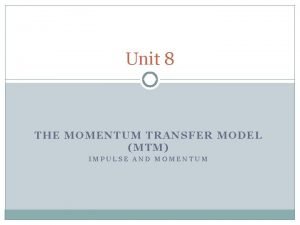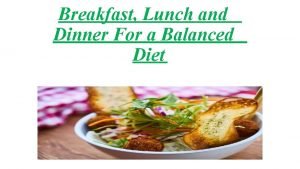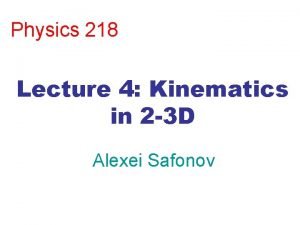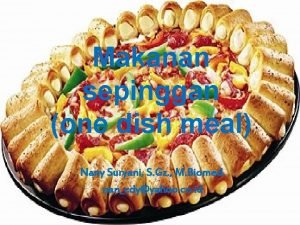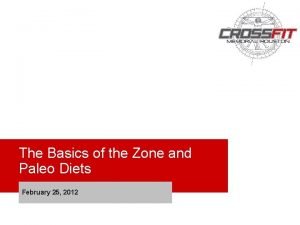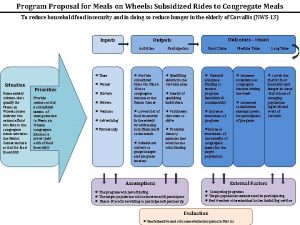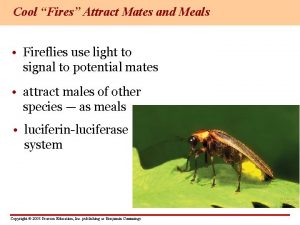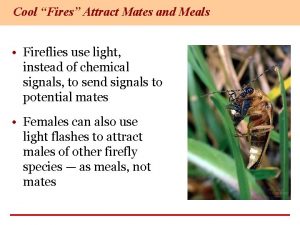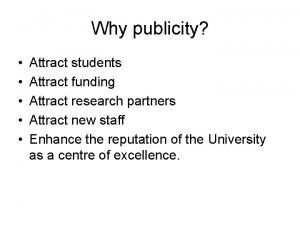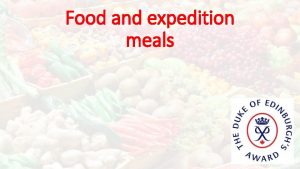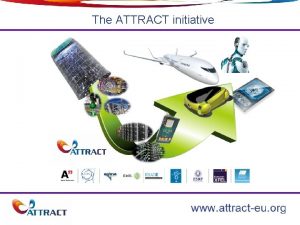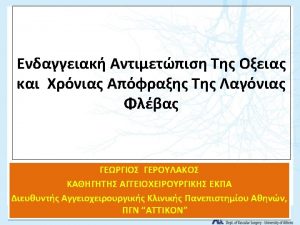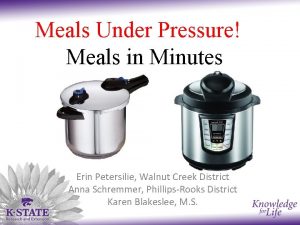Cool Fires Attract Mates and Meals Fireflies use


































- Slides: 34

Cool “Fires” Attract Mates and Meals • Fireflies use light to signal to potential mates • attract males of other species — as meals • luciferin-luciferase system Copyright © 2003 Pearson Education, Inc. publishing as Benjamin Cummings

Energy and cells • What is energy? Why do we need it? • How do chemical reactions use or produce energy? • How does ATP transfer energy? • How do enzymes affect rates of chemical reactions?

• Energy is the capacity to perform work

Chemical energy is due to the arrangement of atoms in molecules Rearrangement of atoms will either store or release energy chemical reaction = rearrangement of atoms Copyright © 2003 Pearson Education, Inc. publishing as Benjamin Cummings

Potential energy of molecules – Endergonic reactions absorb energy and yield products rich in potential energy Products Amount of energy INPUT Reactants Figure 5. 3 A Copyright © 2003 Pearson Education, Inc. publishing as Benjamin Cummings

Potential energy of molecules – Exergonic reactions release energy and yield products that contain less potential energy than their reactants Reactants Amount of energy OUTPUT Products Figure 5. 3 B Copyright © 2003 Pearson Education, Inc. publishing as Benjamin Cummings

Energy content of common chemicals (foods) Energy used in activities

ATP shuttles chemical energy within the cell • In cellular respiration, some energy is stored in ATP molecules • ATP powers nearly all forms of cellular work • ATP is key to energy coupling Copyright © 2003 Pearson Education, Inc. publishing as Benjamin Cummings

• This reaction supplies energy for cellular work: Phosphate groups Adenine Hydrolysis Energy Ribose Adenosine triphosphate Adenosine diphosphate (ADP) Figure 5. 4 A Copyright © 2003 Pearson Education, Inc. publishing as Benjamin Cummings

Fig. 5. 8

How do enzymes work? • For a chemical reaction to begin, reactants must absorb some energy – energy of activation (EA) = energy barrier Enzymes lower energy barriers Copyright © 2003 Pearson Education, Inc. publishing as Benjamin Cummings

• enzymes can decrease the energy barrier Enzyme EA barrier Reactants 1 Products Figure 5. 5 A Copyright © 2003 Pearson Education, Inc. publishing as Benjamin Cummings 2

• enzyme is unchanged and can repeat the Glucose process Enzyme (sucrase) Fructose 4 Active site Substrate (sucrose) 1 Enzyme available with empty active site Products are released 3 A specific enzyme catalyzes each cellular reaction Substrate is converted to products Figure 5. 6 Copyright © 2003 Pearson Education, Inc. publishing as Benjamin Cummings 2 Substrate binds to enzyme with induced fit

The cellular environment affects enzyme activity • Enzyme activity is influenced by – temperature – salt concentration – p. H • Reaction rate is affected by amount of substrate • Allosteric regulation by other factors Copyright © 2003 Pearson Education, Inc. publishing as Benjamin Cummings

• Some enzymes require nonprotein cofactors Ex. zinc, iron coenzymes = cofactors that are organic molecules Ex. vitamins Copyright © 2003 Pearson Education, Inc. publishing as Benjamin Cummings

A. Cellular respiration 1. Glycolysis 1. Kreb cycle 1. Electron transport chain 2. B. Fermentation

• Cellular respiration breaks down glucose molecules and banks their energy in ATP – uses O 2 and releases CO 2 and H 2 O Glucose Oxygen gas Copyright © 2003 Pearson Education, Inc. publishing as Benjamin Cummings Carbon dioxide Water Energy

Redox reactions are linked oxidations and reductions • Glucose gives up energy as it is oxidized oxidation = loss of H Oxygen is reduced (gains H) Loss of hydrogen atoms Energy Glucose Gain of hydrogen atoms Figure 6. 4 Copyright © 2003 Pearson Education, Inc. publishing as Benjamin Cummings

• An overview of cellular respiration High-energy electrons carried by NADH GLYCOLYSIS Glucose Pyruvic acid Cytoplasmic fluid Figure 6. 8 Copyright © 2003 Pearson Education, Inc. publishing as Benjamin Cummings KREBS CYCLE ELECTRON TRANSPORT CHAIN AND CHEMIOSMOSIS Mitochondrion

Glycolysis harvests chemical energy by oxidizing glucose to pyruvic acid Glucose Figure 6. 9 A Copyright © 2003 Pearson Education, Inc. publishing as Benjamin Cummings Pyruvic acid

Pyruvic acid is chemically groomed for the Kreb cycle • Each pyruvic acid molecule is broken down to form CO 2 and a two-carbon acetyl group, which enters the Kreb cycle Pyruvic acid Figure 6. 10 Acetyl Co. A (acetyl coenzyme A) CO 2 Copyright © 2003 Pearson Education, Inc. publishing as Benjamin Cummings

The Kreb cycle completes the oxidation of organic fuel Acetyl Co. A • enzymes strip away electrons and H+ from each acetyl group, generating many NADH and FADH 2 molecules KRES CYCLE Figure 6. 11 A Copyright © 2003 Pearson Education, Inc. publishing as Benjamin Cummings 2 CO 2

• Electron Transport System and chemiosmosis in the mitochondrion Protein complex Intermembrane space Electron carrier Inner mitochondrial membrane Electron flow Mitochondrial matrix ELECTRON TRANSPORT CHAIN Figure 6. 12 Copyright © 2003 Pearson Education, Inc. publishing as Benjamin Cummings ATP SYNTHASE

cell outer membrane inner membrane mitochondrion

glycolysis inner membrane outer membrane H+ + H H+ H+ + H electron transport chain Krebs cycle + H H+ e. O 2 outer compartment H 2 O inner compartment H+ + H

: Certain poisons interrupt critical events in cellular respiration Rotenone Figure 6. 13 Cyanide, carbon monoxide ELECTRON TRANSPORT CHAIN Copyright © 2003 Pearson Education, Inc. publishing as Benjamin Cummings Oligomycin ATP SYNTHASE

• An overview of cellular respiration High-energy electrons carried by NADH GLYCOLYSIS Glucose Pyruvic acid Cytoplasmic fluid Figure 6. 8 Copyright © 2003 Pearson Education, Inc. publishing as Benjamin Cummings KREBS CYCLE ELECTRON TRANSPORT CHAIN AND CHEMIOSMOSIS Mitochondrion

Fermentation is an anaerobic alternative to aerobic respiration • Without oxygen, cells can use glycolysis alone to produce small amounts of ATP – But a cell must replenish NAD+ Glucose Copyright © 2003 Pearson Education, Inc. publishing as Benjamin Cummings Pyruvic acid

• In alcoholic fermentation, pyruvic acid is converted to CO 2 and ethanol – This recycles NAD+ to keep glycolysis working FERMENTATION GLYCOLYSIS released 2 Pyruvic Glucose acid 2 Ethanol Figure 6. 15 C Copyright © 2003 Pearson Education, Inc. publishing as Benjamin Cummings

• In lactic acid fermentation, pyruvic acid is converted to lactic acid – NAD+ is recycled • Produces cheese and yogurt GLYCOLYSIS 2 Pyruvic Glucose Figure 6. 15 B Copyright © 2003 Pearson Education, Inc. publishing as Benjamin Cummings acid 2 Lactic acid

Cells use many kinds of organic molecules as fuel for cellular respiration • Polysaccharides glucose for glycolysis • Proteins • Fats monosaccharides amino acids acetyl-Co A Copyright © 2003 Pearson Education, Inc. publishing as Benjamin Cummings Krebs cycle

• Pathways of molecular breakdown Food, such as peanuts Polysaccharides Fats Proteins Sugars Glycerol Fatty acids Amino groups Glucose G 3 P Pyruvic acid Acetyl Co. A GLYCOLYSIS Figure 6. 16 Copyright © 2003 Pearson Education, Inc. publishing as Benjamin Cummings KREBS CYCLE ELECTRON TRANSPORT CHAIN AND CHEMIOSMOSIS

Food molecules provide raw materials for biosynthesis • cells need raw materials for growth and repair – Some directly from food – Others made from intermediates in glycolysis and the Krebs cycle • Biosynthesis uses ATP (endergonic) Copyright © 2003 Pearson Education, Inc. publishing as Benjamin Cummings

• Biosynthesis of macromolecules from intermediates in cellular respiration ATP needed to drive biosynthesis KREBS CYCLE GLUCOSE SYNTHESIS Acetyl Co. A Pyruvic acid G 3 P Glucose Amino groups Amino acids Fatty acids Glycerol Sugars Proteins Fats Polyscaccharides Cells, tissues, organisms Figure 6. 17 Copyright © 2003 Pearson Education, Inc. publishing as Benjamin Cummings
 Alliteration song lyrics
Alliteration song lyrics Song with literary devices
Song with literary devices Romantic garden
Romantic garden Liu santiesteban biografia
Liu santiesteban biografia When fighting fires a firefighter must use great caution
When fighting fires a firefighter must use great caution Causes and effects of wildfires
Causes and effects of wildfires In your mates corner
In your mates corner Being in someone's corner
Being in someone's corner Kakla krokas norma
Kakla krokas norma Be in your mates corner
Be in your mates corner Balanced meals for breakfast lunch and dinner
Balanced meals for breakfast lunch and dinner British meals and meal times in england
British meals and meal times in england Eating together class 4 evs worksheets
Eating together class 4 evs worksheets Most welding environment fires occur during
Most welding environment fires occur during The five classes of fire
The five classes of fire Fire extinguisher pictographs
Fire extinguisher pictographs Different fires
Different fires Fire triangle consists of
Fire triangle consists of 2007 greek forest fires
2007 greek forest fires Vragen
Vragen Analyse
Analyse A destroyer simultaneously fires two shells
A destroyer simultaneously fires two shells The rich eat three full meals
The rich eat three full meals Mary's meals malawi
Mary's meals malawi One dish meal kontinental
One dish meal kontinental Ameriqual apack
Ameriqual apack Chapter 10 planning meals
Chapter 10 planning meals Traditional english meals
Traditional english meals Paleo zone meals
Paleo zone meals Mary's meals ceo salary
Mary's meals ceo salary Subsidized meals
Subsidized meals You are what you eat do you agree or disagree
You are what you eat do you agree or disagree Bless us oh lord as we sit together
Bless us oh lord as we sit together Bless us o lord prayer after meals
Bless us o lord prayer after meals School meals north lanarkshire
School meals north lanarkshire




